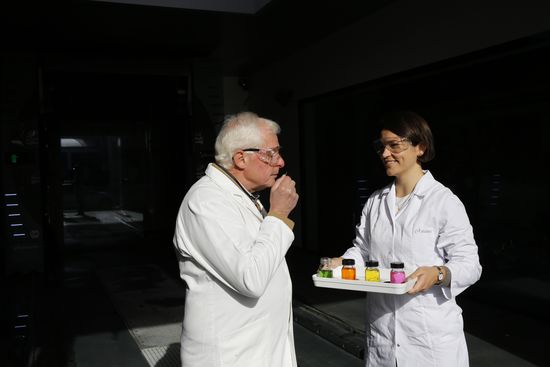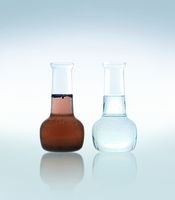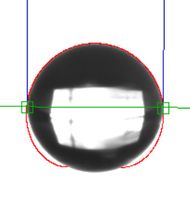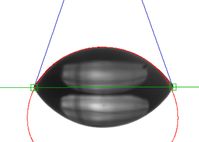
From the idea through to production
How do the magic products actually come about that help to get vehicles clean in the car wash? A visit to Auwa sheds light on this.
Take one hundred millilitres of this solution, fifty millilitres of that solution and twenty milligrams of purple powder – and the mixture is already starting to foam vigorously. However, you can be sure that product development in the car washing industry does not work quite so impressively as back at school in the chemistry lessons. On the contrary, it first has to be defined as to where exactly the journey through the test tubes is to lead.
As a layman, you might be tempted to think that today there is hardly any further need for development from the chemicals specialists of leading producers. After all, the market now offers products with effects that users would hardly have dared dream about in the past. Just consider the premium chemicals with repair effect, which virtually all well-known brands are currently plugging. But time never stops. Car wash technology is changing as are the paints used by the automotive industry, surface materials, not to mention the shapes and sizes of vehicle bodies, body styling components and wheel rims. Then there are the different requirements in international markets.
Xenia Stockinger, product manager at Washtec, has an illuminating example here. "In Scandinavia, they drive on studded tyres. These cause different dirt to get whirled up than in our country, where de-icing salt is used. This alone results in different requirements for the washing chemicals used.”
As with all industrial developments, expectations and reality cannot always be in perfect harmony. After all, research moves within a triangle made up of time, cost and quality. Businesses must by necessity be profit-oriented in their operations.
Specifications for washing chemicals
Endless projects, overly complex manufacturing processes or disproportionately expensive materials are simply not realistic. Although customers expect a product that works without problems, this still has to be at an acceptable price. And last but not least, the requirements with regard to gentle application and environmental compatibility have increased over the years.
Founded in Augsburg in 1970, Auwa can look back on 47 years of experience in the development and production of washing chemicals. Auwa has been part of the Washtec Group since 2008 and has a production facility in Grebenau, Germany, which has recently been expanded. As far back as 2008, Washtec took over the chemical manufacturer Adekema in Bollebygd, Sweden, thereby gaining a foothold in the Scandinavian region.
Last year, Washtec complemented its Augsburg site with a showroom with two wash bays plus a presentation and conference room. Each bay is equipped with the gantry car washes Softcare Pro Classic Race and Softcare2 Pro. A commercial vehicle wash is also located outside.
It is in this new building that I have an appointment with product manager Stockinger to learn about the regulations governing the development of new products for automatic car washes. However, the processes from the project order to series production are by no means only done by Auwa in this way, but are considered standard practice in product development processes.
Customer proximity guards against undesirable developments
First, the customer needs have to be clarified, after all, the product should not ignore the market. Last but not least, the chemical manufacturers have a relatively good rapport with their target customers through their sales force, helping them to gauge their expectations. Equipped with this knowledge, the specifications sheet can be finalised. For our application area, what the reference products achieve, most certainly plays a role - both our own and those of the competitors.
Furthermore, relevant specifications are requested: What kind of foam performance is expected, which fragrance and what intensity, which cleaning performance and which drying capabilities. The application area is no less important: gantry, conveyor tunnel system or self-service car wash. Relevant points also include the countries targeted by the product and the size of the pack. This compilation (portfolio) constitutes the basis for the assessment by the R&D department. Particular importance is attached to key business figures such as sales volume, price and production costs.
This defines the basis for the actual development, i.e. the "engineering". We then don't just tinker around aimlessly, but devise a concept for the procedure, which is finalised in a "specification sheet". This ensures that the requirements specified before in the project order are meticulously processed.
Once it has been possible to develop a product with the given characteristics and objectives, the next step is to test its key functions - usually first under laboratory and then under real conditions. It may be necessary to make changes to the formulation, but ideally the preparation can go into production after this development process.
This excursion into the theory of product development is followed by a laboratory tour. Safety regulations such as the wearing of protective goggles must be strictly adhered to - although you are always careful not to knock over any of the numerous chemical bottles with careless movements.



Lab work: Successful treatment Contact angle: The fat droplet
of service water. on the left will roll off much better.
Contact angle measurement shows effect of ShineTecs
Most of their labels carry names I have never heard of. The technical staff working there are proficient in all the substances - earning additional respect from me.
Now that they've got me on site, Mrs Stockinger and her expert lab technicians won't let me go without first demonstrating the contact angle measurement I have thus far only known in theory.
It is basically about treating vehicle surfaces with preservatives. These are meant to increase the surface tension, so that water can roll off better. First of all, this facilitates the drying process in the car wash. As a result, rain and spray water run off better, taking the dirt bound in the drops with them, instead of leaving it on the surface to dry on paint, metal and plastic in the form of ugly spots.
With the contact angle measurement, Auwa can demonstrate in a comprehensible way - to a mostly impressed clientele - that Shinetecs vehicle surfaces are particularly water-repellent. The drops are rounder and thus the angle between drop edge and surface is greater. Where surfaces are not properly prepared, i.e. less hydrophobic, the drops are shallow and the angle correspondingly small. This is also a good way of demonstrating the effect duration of preservative and sealing products. Accordingly, Auwa cannot only claim in good conscience that a more frequent use of Shinetecs has an even more lasting effect, because the acryl-ionic components effectively close micropores. Auwa can also prove it.
Source: Dr. Koenigsbeck, tankstellenWelt 12/2017









